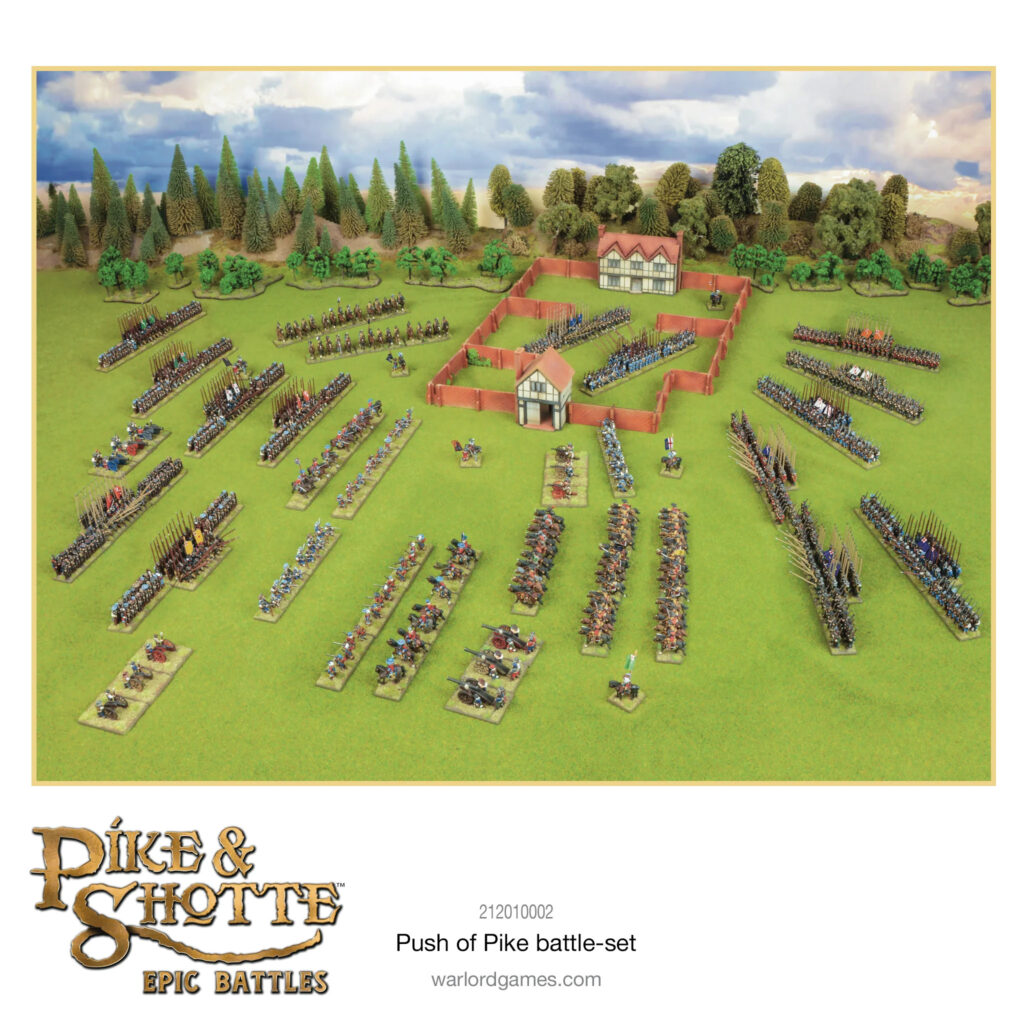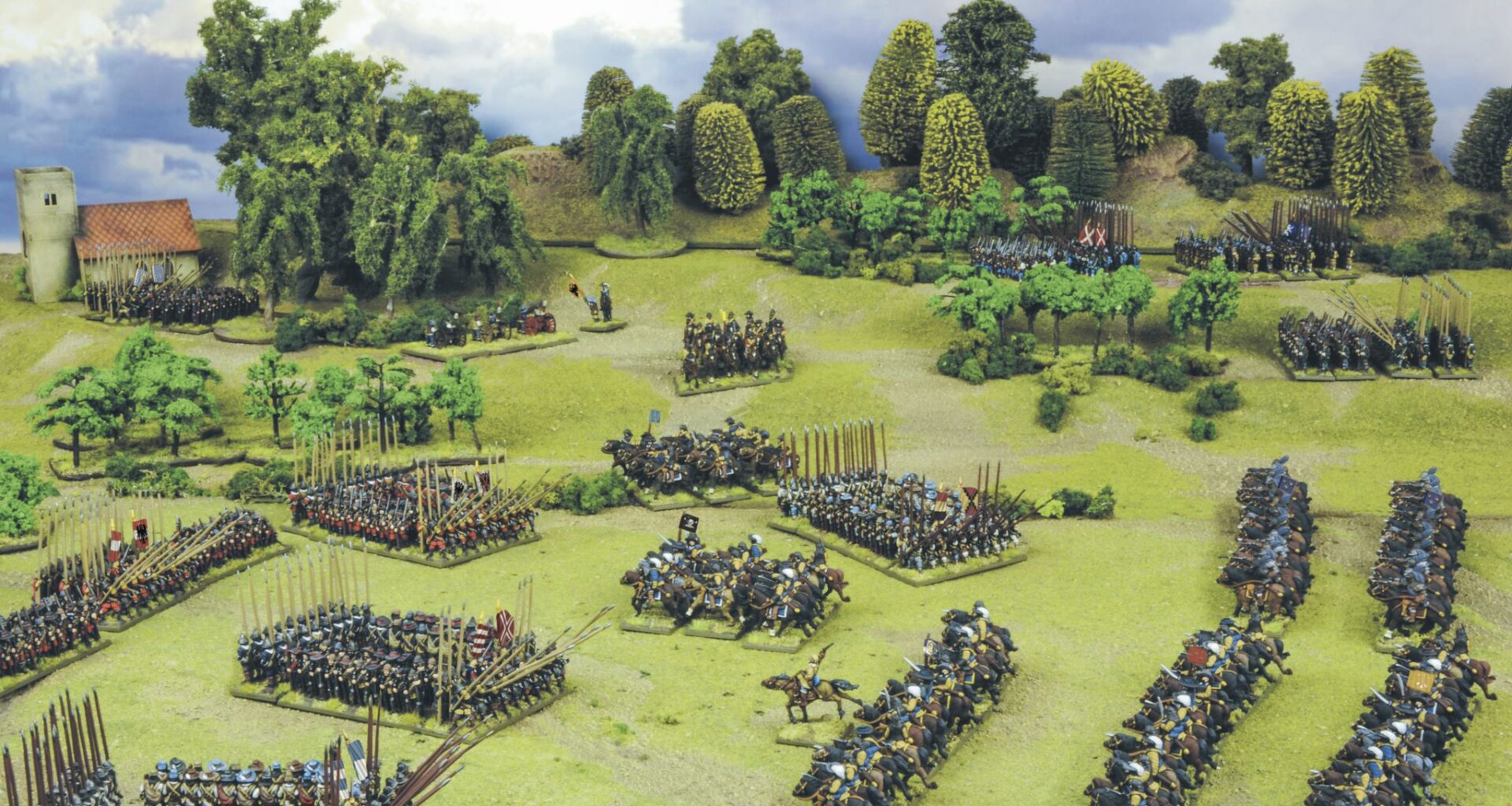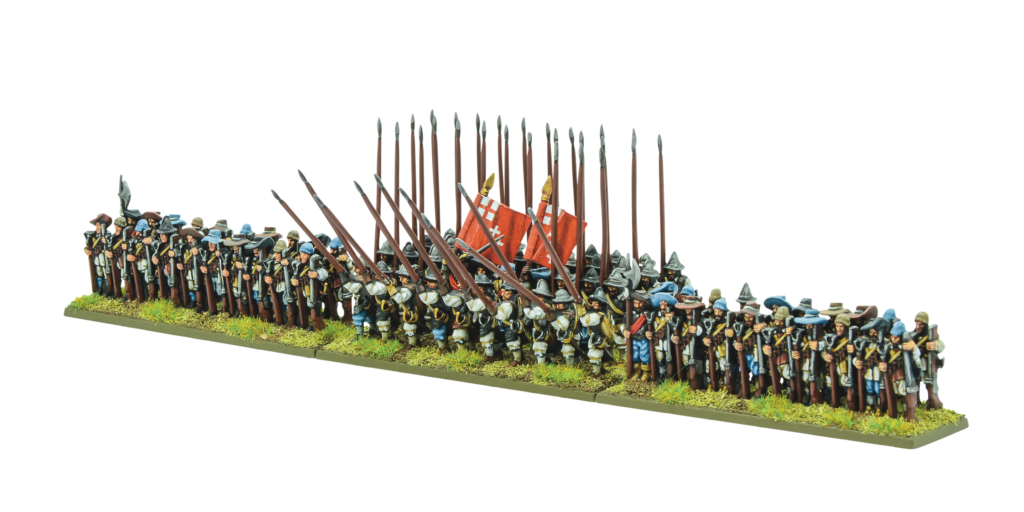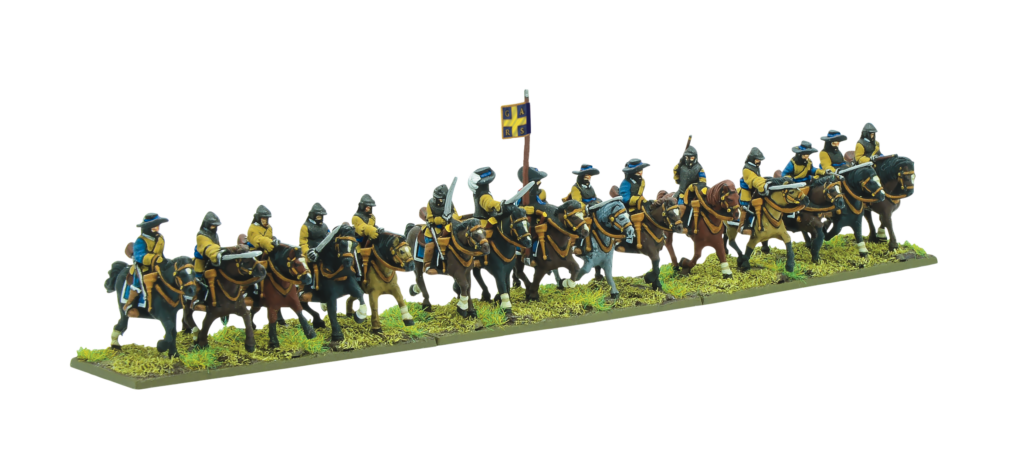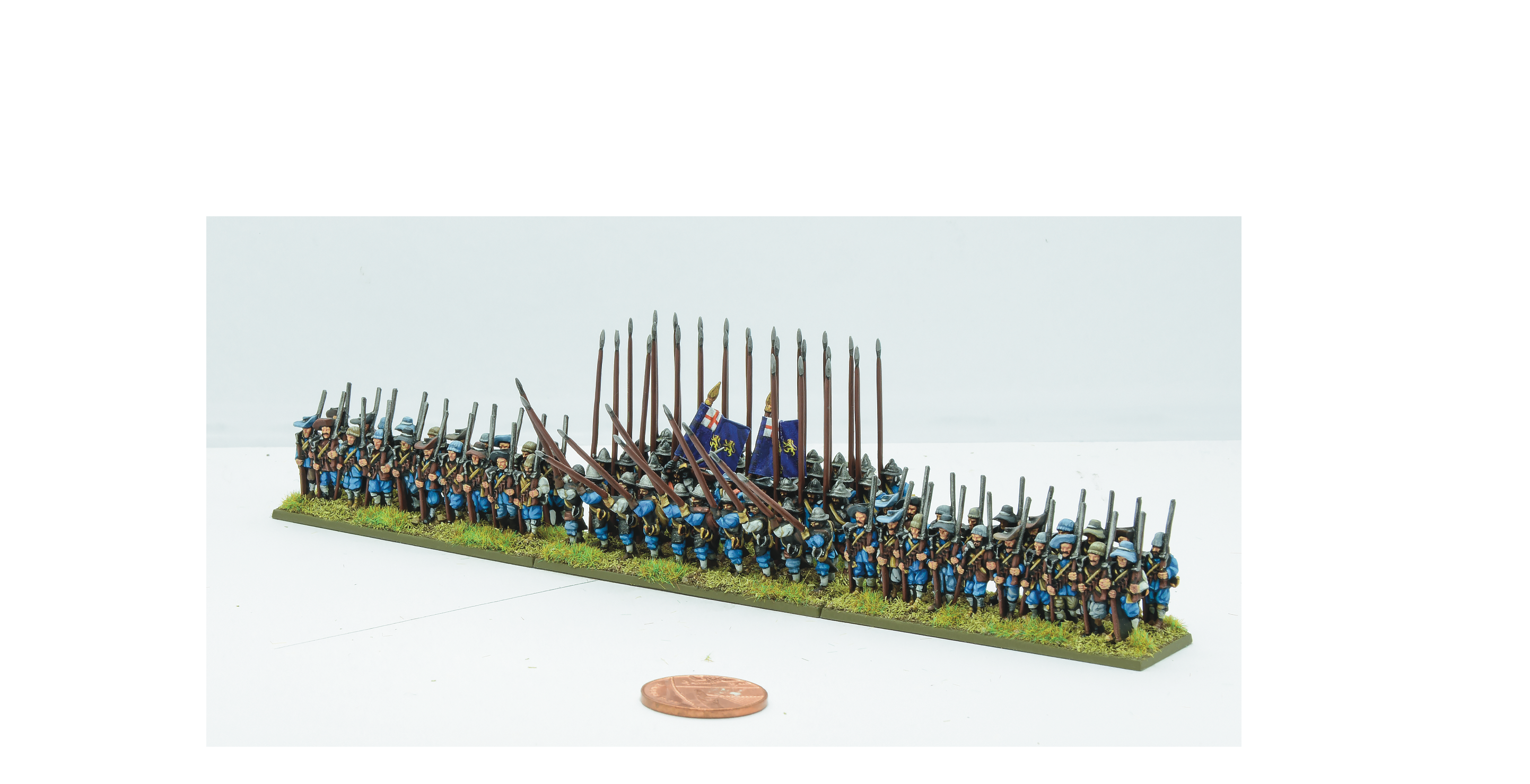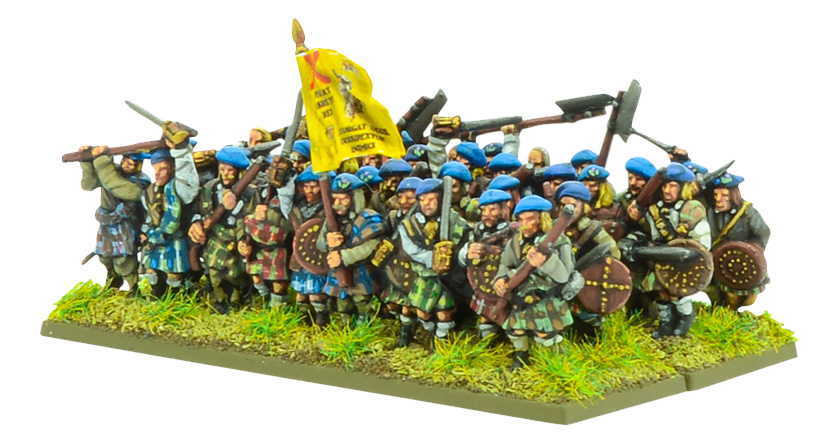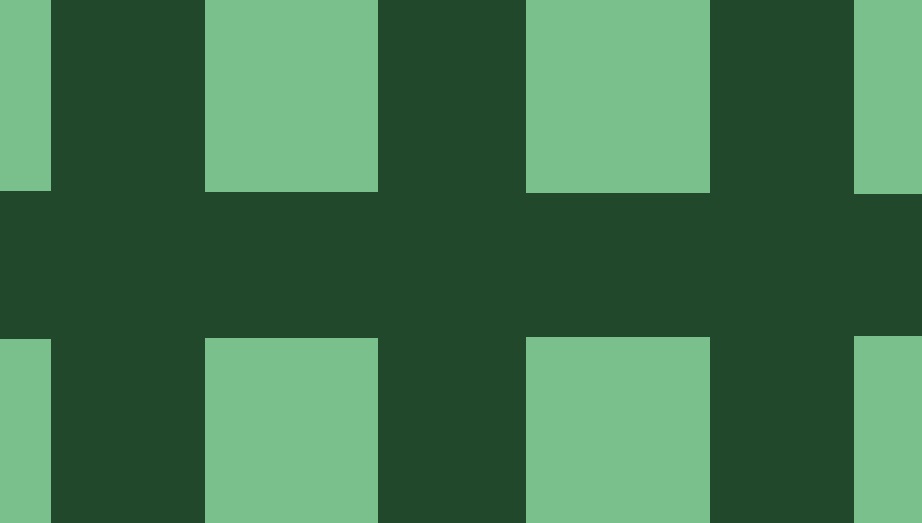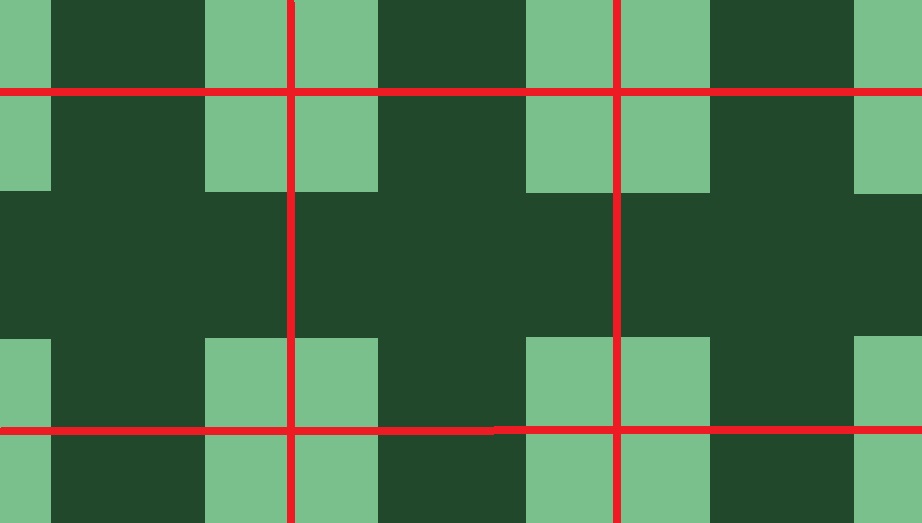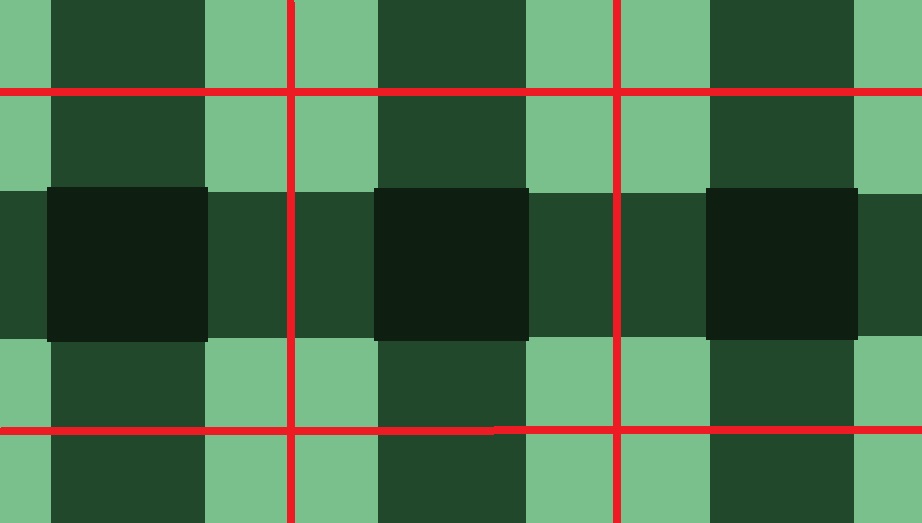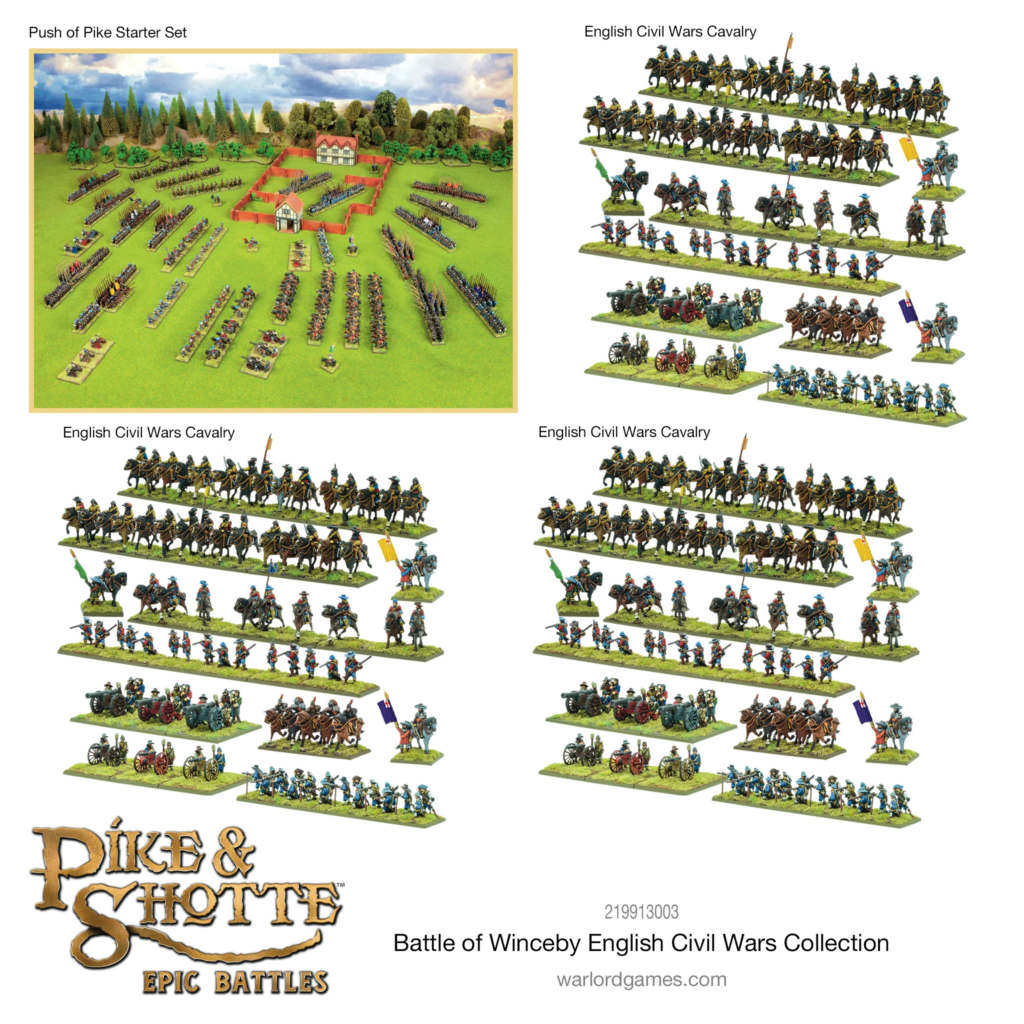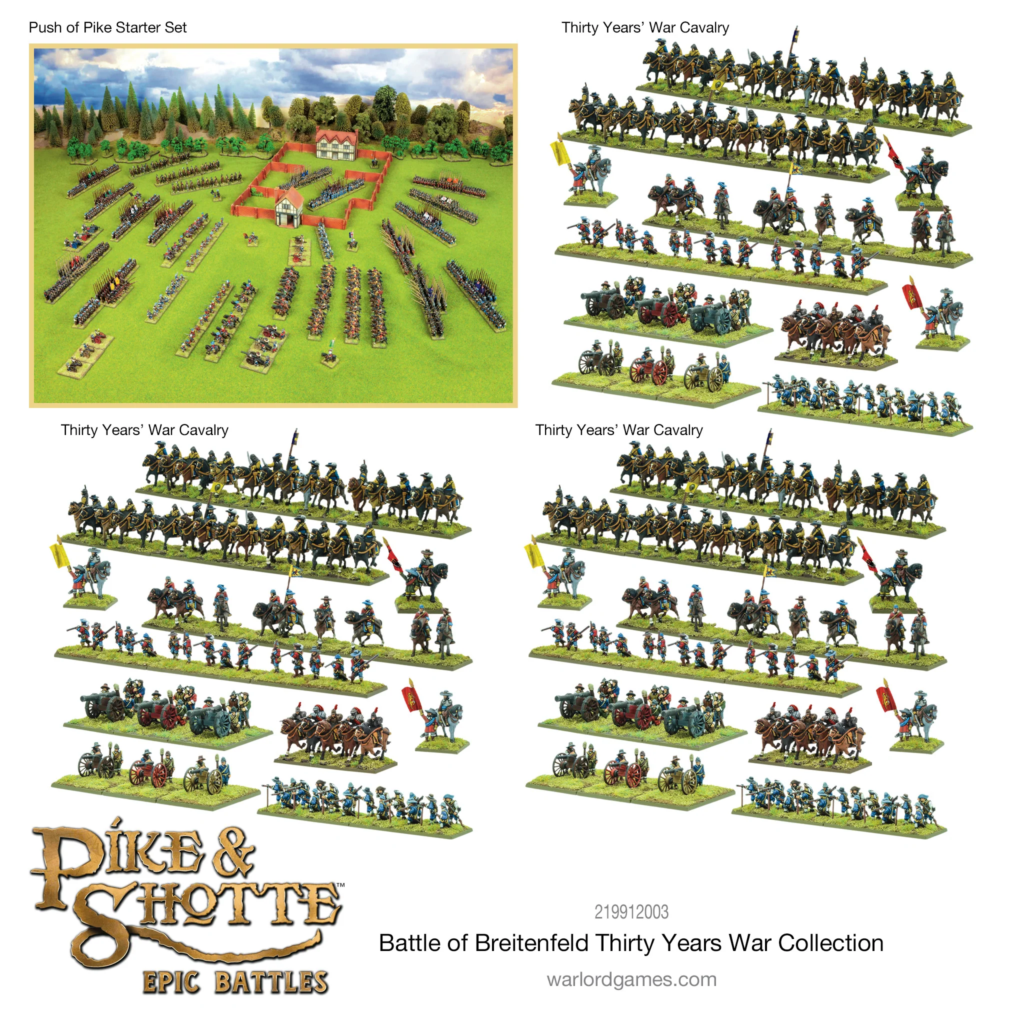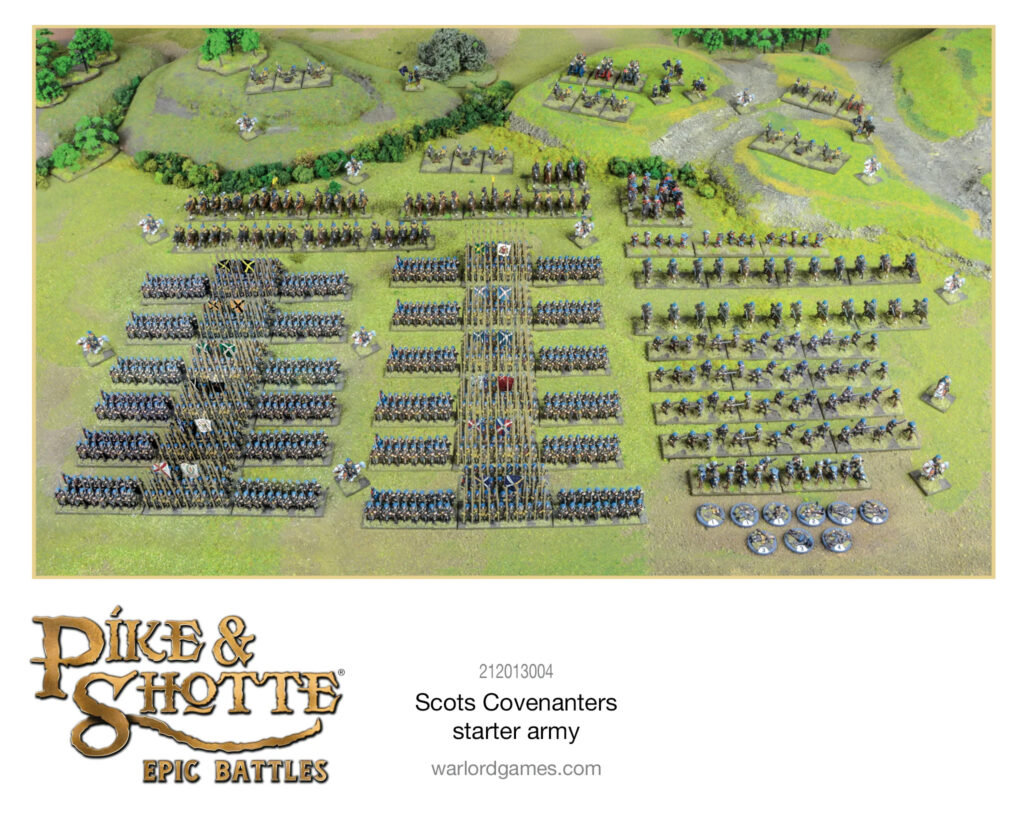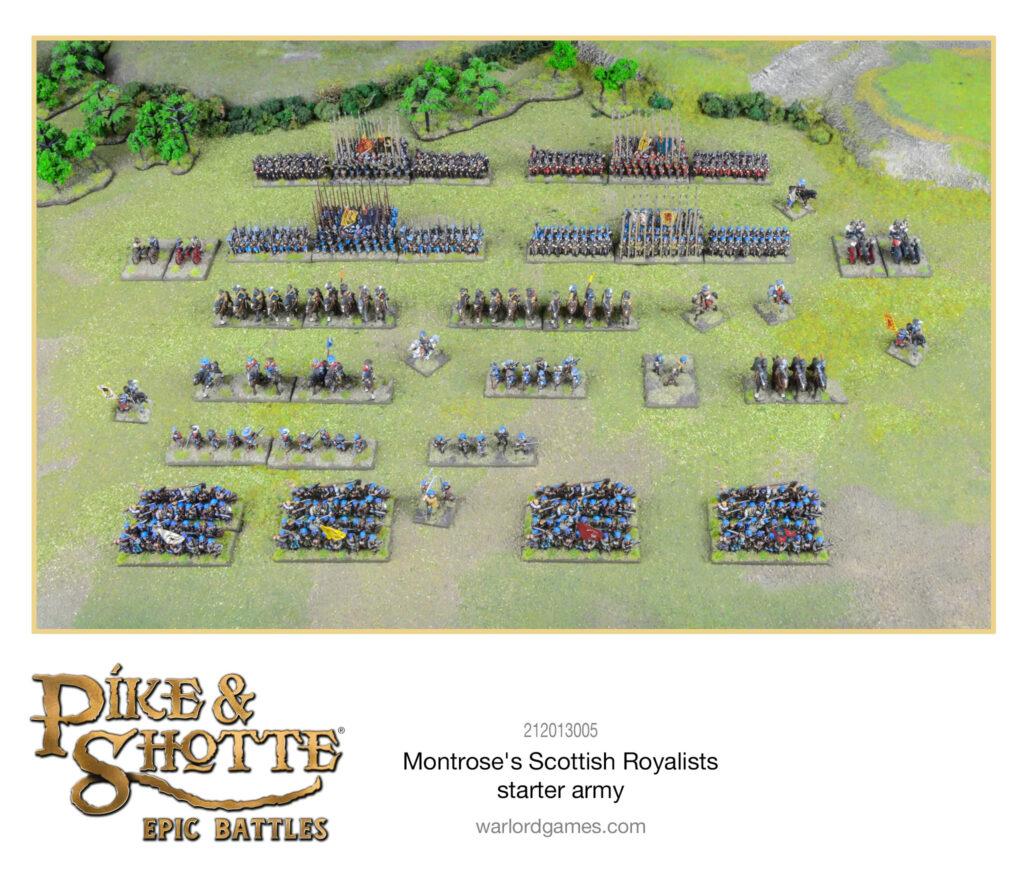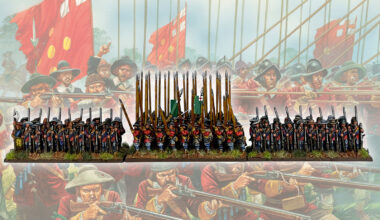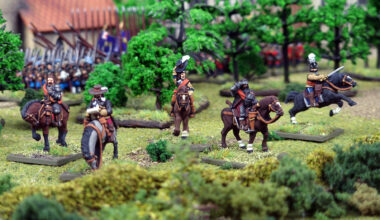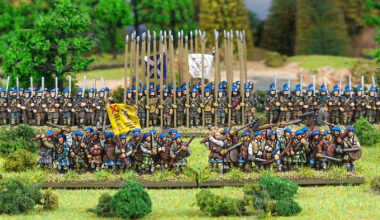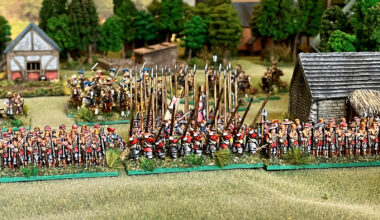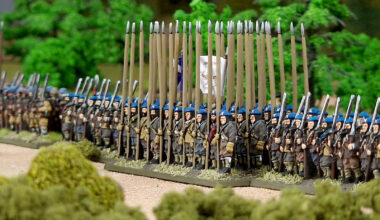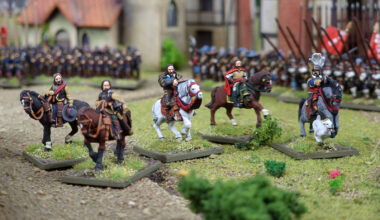One of the joys of working in proximity of the Design Studio is that I’m constantly surrounded by the work of our awesome Studio Painters, covering all of our ranges – Pike & Shotte: Epic Battles is no exception! Naturally, I had to collar Jamie Getliffe, who painted the Studio’s forces alongside Andrés Amián Fernández, to find out a little bit more!
As our resident Napoleonics specialist, Jamie is usually found elbow-deep in frogging and lace, and the rather more austere uniforms of the Pike & Shotte period are about as far from fancy as you can get! Small wonder that the first time Jamie had ever painted seventeenth century miniatures was when PIke & Shotte Epic Battles first landed on his desk – but he’d had a familiarity with the period ever since his brother became a member of the Sealed Knot re-enactment society in their youth – I’m starting to sense something of a theme! As always, Jamie began the project with some research reading, before diving straight in. Finding the rather simpler uniforms much quicker to paint than their eighteenth century counterparts meant he was able to get plenty done quickly, working with a very simple scheme. He describes it as “one base colour, one wash of dilute Strong Tone, one highlight” – if only mastering brush control and colour composition were so easy!
Every time we talk to someone who’s been painting a lot of Epic Battles stuff, we find ourselves asking the rather daft-sounding question “how do you paint those really little details”, and getting treated to the appropriately weary reply of “with a very small brush”. Jamie swears by an Army Painter Insane Detail brush, calling it his best friend on this project, and while “use a small brush” may sound facetious, it’s amazing what you can achieve by going slowly and using the right tools for the job.
With so much work on the Epic Battles series under his belt, I had to ask Jamie for his top tips for those embarking on their first forays into smaller-scale painting, and he gave me two great bits of advice. Firstly, horses – paint them just like the infantry with the basic base/wash/highlight approach, but vary the tones of black and brown as much as possible across units and the army. This will give a really realistic and stylistically excellent variation of colour while sticking to the main ‘theme’, and breaks up the monotony of painting horse after horse (after horse after horse after horse after horse after…). Secondly, when basing up your units, stick the front rank strip to the base first, then add your basing material around it (particularly behind) before you add the rear rank(s) – this avoids having to fumble around trying to get static grass in the gap between the two!
With plenty more Pike & Shotte Epic Battles goodness on the horizon, we’ll be seeing plenty more of Jamie’s awesome work in the Studio’s display cabinets before long, and he’s also embarking on a personal project – Thirty Years’ War Swedish, inspired by his research into Gustavus Adolphus, whom Jamie describes as, and I quote, “an absolute mensch”! I can’t wait to see it, and as soon as he brings it anywhere near the studio, I’ll be certain to collar him for another interview!
Painting Epic Battles Tartan
Jamie was also largely responsible for painting the Studio’s Scottish contingent, with the notable exception of the highland clansmen, which were tackled by Andrés Amián Fernández. We grabbed him for a few words of advice:
Andrés: When I paint tartan, I use the same approach I do when I’m painting WW2 camouflage patterns. It’s always an exaggeration of what you would have in a real uniform, just to give the impression of that pattern. It isn’t too easy, and it’s a little time-consuming, but if you want to get the effect, there is no way around this one.
I normally use a three-colour method:
- A light colour for the background.
- A darker tone of that same background colour, or a contrasting one, for the
thicker lines. - Another dark colour for the thinner lines that cross the squares created by the
thick lines.
First I paint the main background colour, usually a light tone (fig.1). Ater that the trick is a pointy brush and the right consistency for the paint, so you can draw the lines smoothly. I add water (or paint thinner) until I can get a straight line in one go. Then I’ll divide the kilt with equidistant thick vertical lines, and a horizontal one all around the piece of cloth (the same method works for the part hanging from the shoulder and around the waist (fig.2). After this I fill the square gaps left by the thick lines with thinner lines that create a cross pattern in the middle of said squares (fig.3). If you want a bit of extra detail, you could paint in a darker tone in the intersection between the thick lines (fig.4).
Doing variations with different colour palettes will give you a nice range of kilts that will
make those highlanders pop out in the middle of your force.
Start Your Pike & Shotte Epic Battles Journey
With the introduction of the Scots Covenanters and Montrose’s Royalists there are now more ways than ever to begin gaming the English Civil Wars (or perhaps more appropriately, we should call it the War of the Three Kingdoms!) and the Thirty Years’ War in Epic Battles scale. From the Push of Pike starter set, containing two opposing forces and everything you need to get started playing, the new Scots starter armies, a range of amazing money-saving bundles that will give you kickstart towards playing a particular period, to a wide range of individual battalia, commanders and MDF scenery kits – we’ve got you covered!
